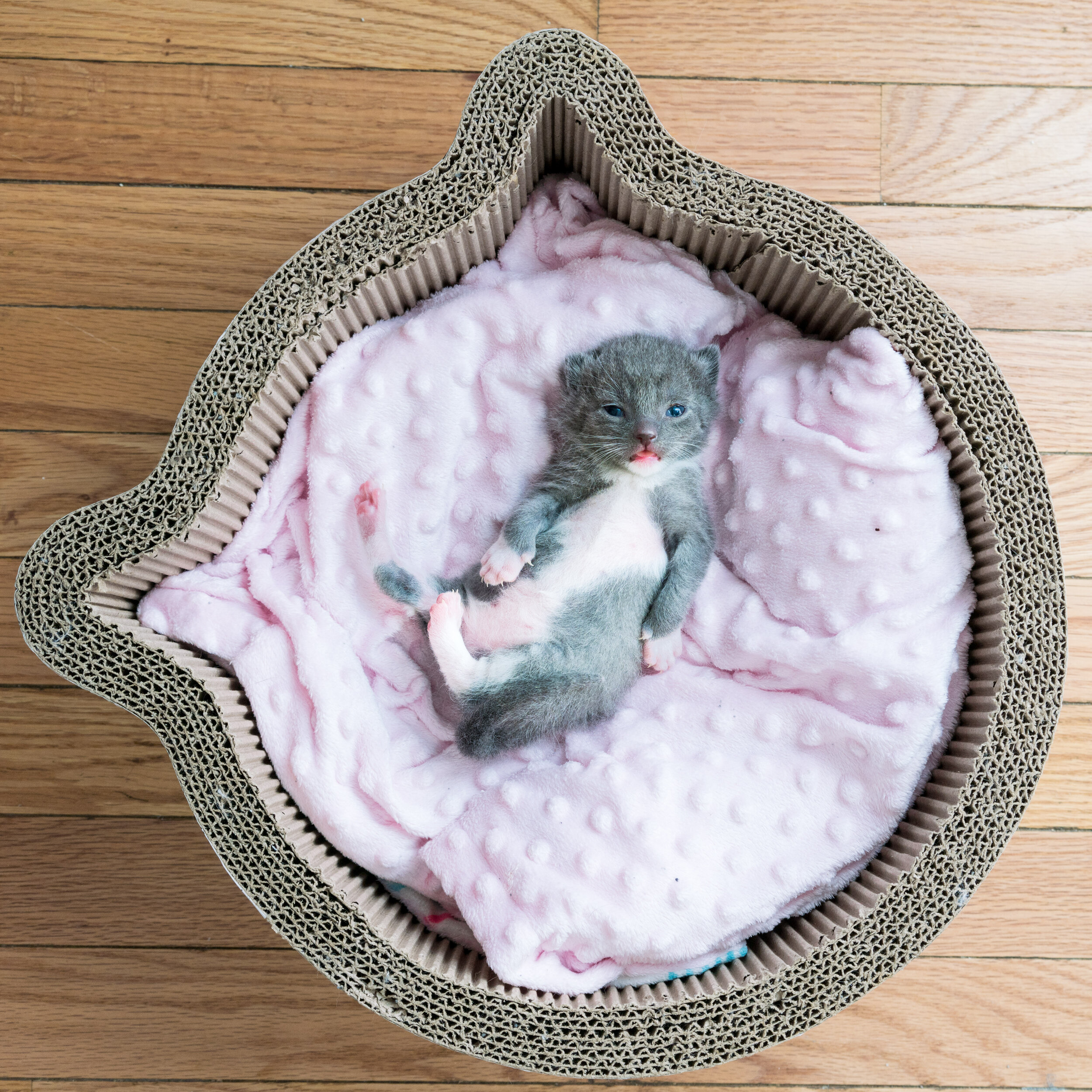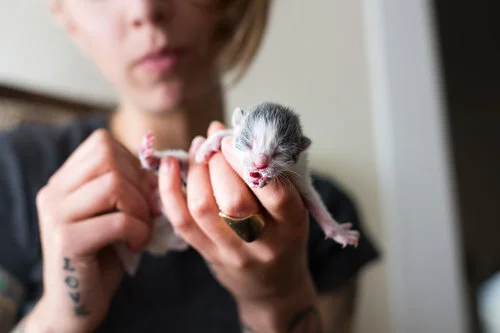Heat Sources for Kittens
Kittens under three to four weeks of age lack the ability to effectively generate and retain heat, and instead depend on access to an external source of warmth. When raised with a mother cat, close contact with her body heat helps them to maintain a safe temperature. Orphaned kittens, however, rely on us to provide them with warmth in order to survive.
Without a proper heat source, the risk of hypothermia is high. Hypothermia contributes to immune suppression, slowed digestion, and organ failure, and is a leading factor in kitten mortality. A scientific study showed that kittens housed in warmer conditions (90°F) had better growth rates and lower rates of death than those housed at a cooler temperature—reinforcing the critical impact of environmental warmth on overall health and survival.
When it comes to keeping kittens warm, there are a lot of different options you can use, from free items in your kitchen cupboard to affordable heat pads to more costly incubators. Let’s look at the pros and cons of each option, and talk about the best products for your kittens.
Option #1: Electric Heating Pad
Pros
Affordable
Can provide long lasting, consistent heat
Good for stationary setups like nurseries or foster rooms
Cons
Cannot use electric heat pads while in transit; impossible to safely take kittens on the go with an electric heat pad
Some heat pads are made of fabric that is difficult to properly sanitize
Many heat pads have an auto-timer and will turn off after 2 hours
Tips
Avoid buying heating pads with non-removable fabric. Remove and wash fabric covers often; spray the heating pad down with a disinfectant as needed.
Make sure the heating pad you’re using doesn’t turn off automatically.
Check the heating pad at each feeding to ensure that it is still warm.
Keep the heating pad on a medium setting and line it with a microfleece blanket.
Always provide a warm zone and a cool zone so that the kitten can move towards and away from the heat.
Option #2: Microwavable Heating Pad
Pros
Moderately affordable
Can provide steady heat for roughly 6 hours
Doesn’t rely on an outlet; perfect for taking kittens on the go
Easy to sanitize
Cons
Potential for overheating, which can scald a kitten
Relies on access to a microwave
Heat is strongest after microwaving and dissipates over the course of several hours
Tips
Be cautious about overheating! Make sure you read the instructions for heating, and microwave it for the correct amount of time for the strength of your microwave.
Cover the heating pad with a microfleece blanket.
Always provide a warm zone and a cool zone so that the kitten can move towards and away from the heat.
Avoid off-brand microwavable pads that may contain harmful substances.
Spray with a disinfectant as needed.
Option #3: Incubator
Cons
Expensive (~$500-1250 range)
Bulky device
Not easily portable
Pros
Consistent, precise regulation of temperature
Ambient heat preferable to spot heat
Contained, quarantined space
Ports for nebulizer and oxygen
Tips
While not necessary, an incubator is a fantastic option for those frequently caring for kittens 0-3 weeks old.
Comes in several sizes; smaller model is perfectly appropriate kittens, but the larger model may be ideal for larger litters or for caring for other species of neonates, like puppies. If out of stock, check out the “bird brooder” which is the same product with a different label.
Use only distilled water in humidifier port.
Sanitize completely between litters.
Recommended temperature and humidity settings:
0-1 week: 87-90°F & 60% humidity
1-2 weeks: 85-87°F & 60% humidity
2-3 weeks: 80-85°F & 60% humidity
3+ weeks: no incubator, give kittens more room to roam and provide a heating pad
Learn more about incubators in my instructional video:
Option #4: Rice Mom
Cons
Not appropriate long-term
Heat wears off after ~2 hours
Must use multiple rice moms to properly heat a bed
Has a strong smell
Pros
Cheap or free
Made out of products you already likely have at home
Works great in an emergency situation
Watch this video to learn how to make a rice mom.
Tips
Use dry, unflavored rice from your kitchen cabinet and pour it into a long, clean sock. Tie a knot around the ankle and microwave until warm. Repeat until you have enough rice moms to heat the bed.
Be cautious about overheating! Don’t use a rice mom that is too hot for you to touch.
Reheat as necessary.
Use several rice moms to heat the kittens’ bed.
Watch this instructional video to see a rice mom in action!
Option #5: Single-Use Hand Warmers
Cons
Too small; must use several to properly heat a kitten’s bed
Heat wears off quite quickly
A wasteful product to use long-term, as it is disposable
Product is dangerous if ingested
Pros
Affordable
Small, easy to keep on hand
Work great in an emergency situation
Stay warm for ~8 hours
Tips
Only use single-use hand warmers in cases of emergency, such as in a rescue kit that you keep in your car or if traveling a short distance with kittens.
Cover the warmers with a soft blanket and monitor the kittens to ensure they are not biting or chewing the warmers.
Check on the heat and replace as needed.
Once you are able, get the kitten a more permanent heat source.








